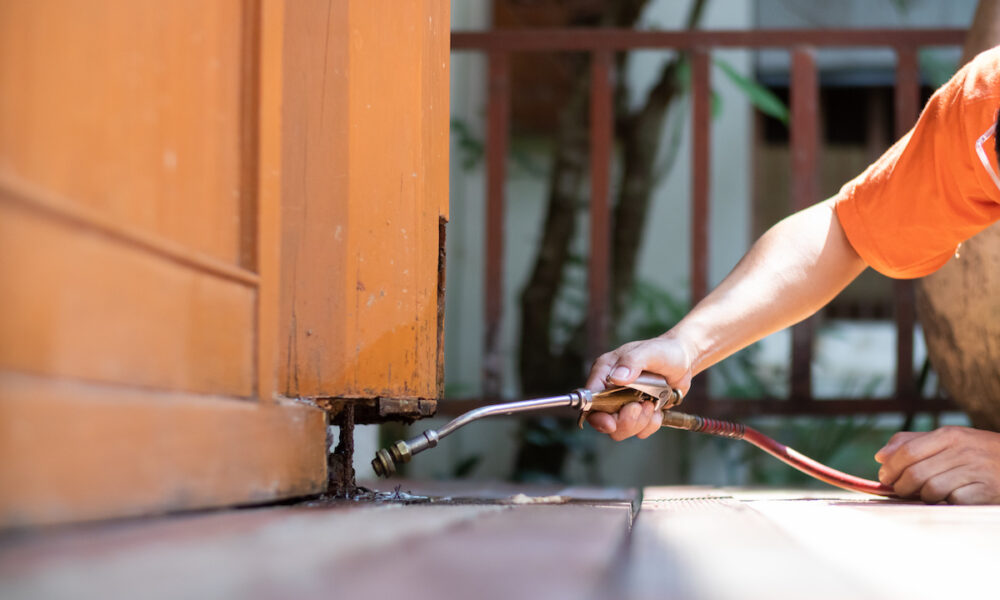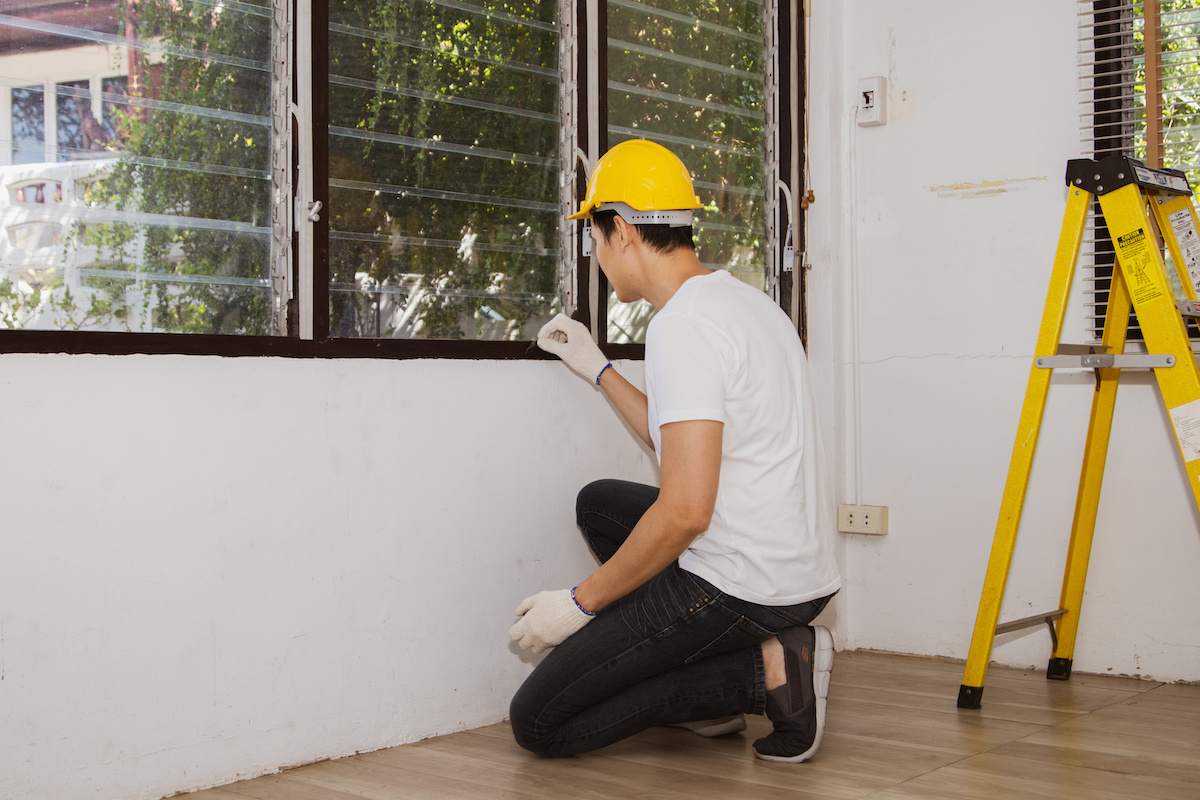
Florida is home to many beautiful sights and animals, but it’s also home to a pesky and costly problem – termites. These small, wood-eating insects can cause significant damage to homes and buildings. They are notorious for causing expensive damage and structural issues. Simply put, termites in Florida are bad news.
Let’s dive deeper into the world of termites in Florida and explore the solutions available to prevent and control their damage.
Types of Termites Found in Florida
Florida is home to four main types of termites: Eastern Subterranean Termites, Drywood Termites, Formosan and Dampwood Termites. Every type of termite has unique characteristics and behaviors. Furthermore, each species has as slightly different way that they infest and damage structures.
Understanding these differences is crucial in determining the best termite control solution for your property. Let’s take a closer look at each type of termite:
Eastern Subterranean Termites
- Most common termite in Florida
- Lives in the soil and creates mud tubes to access food sources above ground
- Can infest any wood structure, including homes, sheds, and fences
- Often enters homes through cracks in the foundation or gaps around plumbing or electrical wires
- Typically infests the bottom levels of a structure first and works its way up
Drywood Termites
- Does not require soil contact. It can live in dry, wooden structures such as attics, furniture, and door frames
- Lives near coastal areas of Florida, especially in older homes
- Does not create mud tubes like subterranean termites
- Swarming behavior often alerts homeowners to an infestation
- Can cause significant damage if left untreated
Dampwood Termites
- Prefers to infest damp or decaying wood. These termites hide in areas with high humidity, such as crawl spaces and basements
- Not as common as subterranean or drywood termites in Florida
- Does not create mud tubes like subterranean termites
- Typically not a threat to homes with proper moisture control measures in place
- Can infest outdoor wooden structures, such as decks and fences, and damage the structural integrity
Formosan Termites
- Formosan termites are an invasive species and live within several counties in Florida
- They are capable of causing significant structural damage in a short amount of time
- Formosan termites are aggressive and can consume wood at a much faster rate than other types of termites
- They can form colonies of millions of termites, making them difficult to control.
- Formosan termites are attracted to moisture and can be found in areas with high humidity
- They can also infest live trees, leading to damage or death of the tree.
Signs of Termite Infestation
Termites can cause significant damage to wooden structures, leading to costly repairs and structural issues. Early detection is key in preventing further damage and controlling the infestation. Here are some common signs of termite infestation to look out for:
Visible damage to wooden structures
- Hollow-sounding wood
- Cracked or distorted paint or drywall
- Sagging or soft wood
- Wood that sounds hollow when tapped
- Damaged or frayed wood fibers
- Visible mud tubes on wood surfaces
Piles of frass or termite droppings
- Termite droppings, also known as frass, resemble sawdust or coffee grounds
- Piles of frass near wooden structures, such as furniture or walls, can indicate a termite infestation
Mud tubes on walls or ceilings
- Mud tubes are tunnels created by subterranean termites to travel from their nest to food sources
- Tubes are typically the size of a pencil or smaller and can be found on walls, ceilings, or foundation walls
Swarming termites
- Termite swarms occur when reproductive termites leave their nest to start a new colony
- Swarms can occur indoors or outdoors and are typically found near a source of light
- Many people confuse termite swarms for flying ants. However, the termites can be distinguished by their straight antennae, uniform wings, and broad waist
If you suspect a termite infestation, it’s important to contact a termite control professional immediately. The longer the infestation goes untreated, the more damage it can cause to your property.
A qualified termite control specialist can conduct a thorough inspection of your property, and determine the extent of the infestation. We can also help develop a custom treatment plan to eliminate the termites and prevent future infestations.
Termite Damage Risks to Your Health and Home
Termites are not only a nuisance, but they can also pose health risks to humans and animals. Here are some of the potential health risks associated with termites:

Structural damage to buildings
- Termites can cause significant damage to wooden structures, leading to costly repairs and structural issues
- Weak or damaged structures can pose a safety risk to occupants
Economic impacts of termite damage
- Termite damage can have a significant economic impact on homeowners, property managers, and businesses
- The cost of repairs and treatment can add up quickly. Unfortunately, insurance may not cover the full cost
- Prepare to pay up to $3,000 for termite damage repair
Risks of respiratory issues due to termite droppings
- Frass, otherwise known as termite droppings, can cause respiratory issues if inhaled
- Termite droppings can trigger asthma attacks or cause other respiratory problems in sensitive individuals
Other potential health risks
- Some species of termites, such as the Formosan termite, can bite humans and animals, causing allergic reactions or infections
- Pesticides used to control termites can pose health risks if not used properly
If you suspect a termite infestation, it’s important to contact a termite control professional immediately. Not only can termites cause structural damage to your property, but they can also pose health risks to you and your family.
Prevention Tips for Termites in Florida
Preventing and controlling termite infestations is crucial for protecting your property and avoiding costly repairs. Here are some termite prevention and control strategies to consider:
Termite prevention strategies for Florida homeowners
- Keep woodpiles and other wooden materials away from the foundation of your home
- Use mulch sparingly and keep it at least 6 inches away from the foundation
- Fix any leaks or moisture issues in and around your home
- Keep gutters clean and in good repair
- Seal cracks and gaps in the foundation, walls, and around utility pipes and wires
- Use pressure-treated wood for outdoor structures such as decks and fences
- Use termite-resistant building materials when constructing new buildings
Termite control methods for infested structures
- Liquid termiticides can be applied to the soil surrounding the structure to create a barrier that termites cannot cross
- Termite baits can be placed in strategic locations to attract and eliminate termites
- Fumigation can be used to eliminate termite infestations in the entire structure
Hiring a professional termite control company
- When you reach out to us at World Class, we will conduct a thorough inspection of your property and develop a customized treatment plan
- We will help ensure that treatment methods are safe and effective and provide guidance on long-term prevention strategies
- Look for a licensed and insured company with a strong reputation in your community
Long-term termite control solutions
- Regular inspections can detect early signs of termite activity and prevent further damage
- Consider ongoing monitoring and treatment to prevent future infestations
- Homeowners can also take steps to prevent termite infestations, such as ensuring proper moisture control and regular maintenance of wooden structures
Contact World Class Wildlife for Termite Control and Treatment
Are you dealing with termites in Florida? World Class Wildlife is here to help. Please contact us if you see signs of termite infestations.
